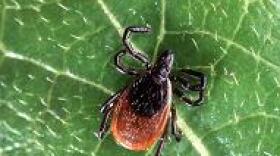As the sight of trucks and plows on icy roads becomes a winter memory, a study from the Cary Institute of Ecosystem Studies reveals the impact of road salt on private drinking water wells. The report focused on a town in Dutchess County.
Each year, millions of metric tons of road salt are applied to roads in the U.S. Some of this salt seeps into the soil, where it accumulates and contaminates groundwater, polluting drinking wells. Victoria Kelly, environmental monitoring program manager at the Millbrook-based Cary Institute, says she and her colleagues wanted to understand why some wells were more at risk than others from road salt pollution.
“We don’t have a really good handle on what happens to it when it gets into groundwater, where it resides, if it’s evenly distributed or it it’s not,” says Kelly. “So this study was an attempt to get at that question.”
So researchers focused their study on East Fishkill. Kelly, the report’s lead author, says the town was chosen simply because public data on well testing results when houses are sold was available, and few townships make such data so readily available. She says environmental scientists have been worried about road salt in groundwater for years.
“Groundwater is important for a few reasons,” Kelly says. “One, it’s often a source of drinking water for humans but it also, in the summertime, it’s the main source of water for a lot of our streams.”
Kelly and her colleagues analyzed publicly available data on water samples taken from 956 private drinking water wells in East Fishkill between 2007 and 2013. The study looked at sodium chloride, which she says is the most common road salt. Kelly says more than half of the wells sampled exceeded the U.S. Environmental Protection Agency guidance level for sodium in drinking water at 20 milligrams per liter.
“There’s a lot of salt in the water,” Kelly says. “There’s a lot of wells that are contaminated to an extent that people should be aware of, I won’t say they should be necessarily alarmed by but, they should be aware of.”
And here are some other findings.
“So we essentially found, not surprisingly, that it’s distributed in higher concentrations closer to roads and in areas where there’s a lot of impervious surface, a lot of pavement,” Kelly says.
Proximity to a road increased a well’s chloride concentration, yet road type – major or minor – did not have an impact.
“There was no relationship with well depth, and that was kind of a surprise,” Kelly says. “There’s a lot of assumption out there that the deeper the well, the cleaner the water, and we didn’t find that.”
The analysis also identified several hotspots, where salinization was especially high. Kelly suggests that contributing factors included sharp turns and steep grades that required heavier road salt application, and narrow streets that only accommodate older, less efficient salt trucks. Kelly says she would expect similar results in areas with the same type of geology and use of road salt. The study is published in the Journal of Environmental Quality.






